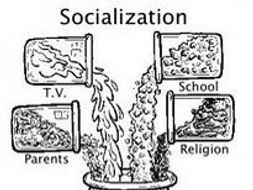In July 2014, blessed with leisure and opportunity, I allowed myself the privilege of four days of meditation and mindfulness practice on the beach at the Pinery Provincial Park, near Grand Bend, Ontario. On the last day, as I sat on the warm sand, diving deeply into the wonder of our star high in the afternoon dome, the glistening blue water reflecting the sun’s crisp light, the wind howling past my ears, the waves crashing and splashing upon the shore, the heat of the relentless summer air on my receptive skin, and the streaking of birds sailing upon the gusting winds, I had a profound realization, the depths of which I had never experienced before; and have only captured a handful of moments since then. The realization was this: all the moments of my life —every single one— every first kiss, every last goodbye, every failure and triumph, every pang, every confused and tortured night, every jubilant dance, every mistake and misstep, were stones on a path laid out behind me which led me to that beach, where everything was perfect. I felt an alloy of gratitude, meaning, awe, smallness, greatness, understanding, forgiveness, and love that I know I will not be able to convey in English, had I thousand years to study Shakespeare.
I imagine my description is the type of experience novice
mediators mostly expect when they think of meditation. What the Tibetan Buddhists
call a Proximal Nirvana: close to, but not quite the big Nirvana Shakyamuni Buddha reached in his awakening experience. However, my reason for beginning a
meditation practice wasn’t religiously motivated. I just wanted to stop
hurting. Like most people who turn to meditation in the West, I did so because
I was told that if I wanted to heal, then meditation would help, and like a
good little patient, I took my daily dose. Six months later, after the
relentless, consistent application of a Mindfulness meditation practice, my
relationship with myself and with my life had changed. The functional
impairments I was experiencing, which sent me into a meditation practice, were
no longer a problem. I believe in what Anderson, Suresh, and Farb, in their
article Meditation Benefits and Drawbacks: Empirical Codebook and
Implications for Teaching (2019,) call the “non pharmacological cognitive enhancing”
effects of meditation, but…it wasn’t easy to develop this practice. At times it
was painful, at times it was terrifying, at times I wanted to quit.
In recent decades,
meditation, especially mindfulness, has become a cultural staple. There is no
shortage of apps, YouTube channels, yoga shops, secular-spiritual
organizations, and teachers touting the benefits of mediation. In 2014, the
year of my little awakening, the cover of Time Magazine was “The Mindful
Revolution”; and things haven’t let up since then. Scholarship and research
have kept abreast with, or perhaps, caused this “revolution” of mindfulness. The Stress Reduction and Relaxation Program (developed by Jon Kabat-Zin), a ten-week meditation treatment, was among one of the first quasi-experimental
trials (circa 1985) to demonstrate that meditation could be effective in managing chronic
pain. This opened the gates to further empirical investigation. Today,
Cognitive Neuroscientists from the University of Toronto’s Regulatory and
Affective Dynamics Lab (Radlab) investigate how people regulate emotions and thinking
in the face of stress, and the way techniques such as Mindfulness can help
people get a grip on their emotionality. The benefits of meditation are well
known, but not the potential challenges a person will have to face on the road
to deepening their meditation practice.
We need more
meditators! In an increasingly medicalized, and over-prescribed society,
meditation has the potential to alleviate so many of the daily challenges
people face in the course of this crazy western way of living. With the
benefits of managing chronic pain so clearly established and considering that
the over prescription of opioids has unleashed an epidemic, it seems a
disservice to our fellow human beings not to ensure their understanding of what
this ancient (yet updated) technology of mind can do. Unfortunately, meditation
practices are eventually abandoned by would-be practitioners 30% of the time. Perhaps
more people would stick with it if teachers and meditators were aware in
advance of the challenges or, quite frankly, horrifying experiences a person could
have while meditating.
 Anderson and
Co. report three categories of challenges that have emerged form the published
literature on meditation drawbacks: Mental health, physical health, and
spiritual health. The specific drawbacks (prepare yourself) are reported to be
“anxiety, mania, traumatic memories, existential challenges, depersonalization
and derealization…acute schizophrenia or meditation-induced psychosis.” Basically, the
worst sorts of experiences you can have. Shocking if you don’t meditate, or you have been misled to believe
something untrue about meditation. However, this list of drawbacks were
reported by deep-time practitioners who had been hitting the cushion for 9-10
hours a day. Possibly, these elite meditators might be diving into waters the
rest of us aren’t. Nonetheless, in my own meditation practice, I have
experienced traumatic memories, forgotten memories, existential challenges, and
anxiety. As it turns out, I am not alone!
Anderson and
Co. report three categories of challenges that have emerged form the published
literature on meditation drawbacks: Mental health, physical health, and
spiritual health. The specific drawbacks (prepare yourself) are reported to be
“anxiety, mania, traumatic memories, existential challenges, depersonalization
and derealization…acute schizophrenia or meditation-induced psychosis.” Basically, the
worst sorts of experiences you can have. Shocking if you don’t meditate, or you have been misled to believe
something untrue about meditation. However, this list of drawbacks were
reported by deep-time practitioners who had been hitting the cushion for 9-10
hours a day. Possibly, these elite meditators might be diving into waters the
rest of us aren’t. Nonetheless, in my own meditation practice, I have
experienced traumatic memories, forgotten memories, existential challenges, and
anxiety. As it turns out, I am not alone!
Anderson,
Suresh, and Farb point out that there is not a reliable source of
evidence-based benefits and drawbacks supporting the experiences of lay
practitioners like me. Their
first-of-a-kind study attempts to derive, from the experience of real-world
(present and former) meditators, a model of benefits and drawbacks that would
have practical applicability for lay practitioners in a Western context.
Anderson and Co. conducted an online survey through the social-media and news
source Reddit. Reddit is an online platform where many people can discuss
topics of interest in online rooms called subreddits. The study requested
participation from members of 20 different meditation subreddits that focus on
everything from Mindfulness to something called Psychonaut ( huh?). They solicited the help
of 240 people, mostly Caucasian, mostly male, and with an average age of 30. The
survey included open-ended and closed questions in five categories: History of
meditation, meditation benefits and Drawbacks,
Motivation/Achievement Styles, Personality, and Mood. The research team asked
whether people had experienced good or bad events, how long they have been meditating; asked questions about motivation,
rewards and fun; assessed personality types using a short version of a
well-established personality inventory; and used a “visual-mood board” to
assess participant moods.
In this
survey, 160 people reported benefits, while 43 people reported drawbacks; 211 reported continued practice (at least one
meditation session a month), and 29 had stopped meditating altogether.
Mindfulness, Vipassana (Traditional Indian insight meditation), Zazen (Traditional
Chinese Buddhist insight meditation), other breath-based practices (e.g. Counting
breaths), other established practices (e.g. Transcendental Meditation), and idiosyncratic
practice were reported. The two most commonly reported meditation styles were mindfulness
and “idiosyncratic practices”, which are a hodgepodge of various techniques.
After a long
and laborious thematic analysis and organization of the data, Anderson and Co.
landed on eight categories of benefits and seven categories of drawbacks (See
Figure 1). The most commonly reported benefits were the emotional gains: Calm, peace, relaxation, equanimity. The
Cognitive Benefits were superior attention, including increased awareness,
clarity of thought, focused concentration, self-control, feeling more
intelligent, feeling better able to make decisions, and enhanced memory and
creativity. Personal Growth, which includes insight and wisdom, was also
endorsed as a common result. A list of desirable traits! The most commonly
reported drawbacks were time demands (the most reported item between drawbacks
or benefits, as some thought time could be better spent doing other things!),
the learning curve (habit formation, slow progress, frustration, and finding a
quiet location), and the negative emotional and psychological outcomes, which
included troubling, scary, and sad thoughts, over-awareness, negative emotions,
boredom, anxiety, nervousness, doubt, and fear of failure at meditation. Not
such an appealing list!
What then, is
to be done with this information? Firstly, it is important to note that the
benefits were found to be more important than the drawbacks, indicating that
the former is worth the latter. Secondly, current meditators were rated as
having a significantly more positive mood, of being more open, and of feeling
more spiritual than former meditators. Ultimately, Anderson and Co. took all of
this data and arrived at three major
implications for meditation teachers: Informed consent, time commitment, and parallelism
and reframing. With the existing literature on meditation, and now this first
crowd-sourced model of meditation benefits and drawbacks in hand, teachers can
ensure that students are aware of the potential risks and challenges involved
with a “cognitive enhancement” technique like meditation; since it has the
potential to be anything but enriching. Clearly, the time commitment issue
needs to be broached up front with aspiring practitioners. Meditation demands time.
For example, mindfulness-based stress reduction requires at least 45 minutes a
day; and many traditional forms require at least an hour. However, according to
this study, there was no discernable difference in meditation benefits after
20-minute sessions. Realistically, if you want to change your life, and your
relationship with your emotions, thoughts, and sensations, if you can’t carve
out 45 minutes a day, you’re probably not serious about personal
transformation.
 Parallelism
and reframing are the most important implications to arise from this study for
teaching. Many items on the benefits list had opposing drawbacks. So, even
though positive emotional changes were reported, so too were negative emotional
experience; Growth was contrasted with stressful personal change; health
management clashed with negative health outcomes (e.g., pain while meditating); and social-interpersonal benefits
compete with social-interpersonal drawbacks. They suggest the stress
and destabilizing experience of a changing worldview (as can happen with
meditation) can be mitigated by a teacher who can keep a student focused on the
long-term positive outcomes that will arise from the shift in perspective. They
also suggest that people feeling alienated by their practice might be
encouraged to more intentionally develop a friend-group of likeminded contemplative
aspirants. Essentially, the teacher needs to be aware of these challenges, have
experience with them, and know how to provide possible solutions to the
challenges of a contemplative life style. I couldn’t agree more.
Parallelism
and reframing are the most important implications to arise from this study for
teaching. Many items on the benefits list had opposing drawbacks. So, even
though positive emotional changes were reported, so too were negative emotional
experience; Growth was contrasted with stressful personal change; health
management clashed with negative health outcomes (e.g., pain while meditating); and social-interpersonal benefits
compete with social-interpersonal drawbacks. They suggest the stress
and destabilizing experience of a changing worldview (as can happen with
meditation) can be mitigated by a teacher who can keep a student focused on the
long-term positive outcomes that will arise from the shift in perspective. They
also suggest that people feeling alienated by their practice might be
encouraged to more intentionally develop a friend-group of likeminded contemplative
aspirants. Essentially, the teacher needs to be aware of these challenges, have
experience with them, and know how to provide possible solutions to the
challenges of a contemplative life style. I couldn’t agree more.
This study
had some limitations, as most studies do. It was a qualitative study, exploring
in depth a contextual phenomenon. As such, no experimentation was conducted;
therefore, scientifically, causation of these benefits and drawbacks cannot be
assumed to be the direct result of meditation. That doesn’t mean this article
doesn’t have relevance; it means we must carefully consider these findings with
other evidence. It was the first-of-a kind study and was not meant to be an
exhaustive exploration or definitive determination. The participants were from
a non-representative sample of the whole population, so it may not be
appropriate to apply these findings to other populations of people.
Participants were sourced from a potentially biased population (well-off Redditers), and this was a snapshot in
time. A long-term study, which explores how these benefits and drawbacks change
over time, would be significantly informative. Indeed, Anderson and Co. are
currently working on such a study. They are sending follow-up emails, “indefinitely”,
to a group of meditators asking questions derived from the meditation benefits
and drawback framework they have developed in this current study. All that being said,
this is
an important article for meditators and teachers.
 In summation,
meditation isn’t a practice to be taken up lightly. It has arrived here, in the
21st century, after 1000s of
years of R&D in the Eastern traditions. Buddhist meditation, particularly mindfulness,
arose from a sophisticated, introspective map of the human mind, as a
technology to be used to deconstruct, what Buddhists think, is the delusion of
an inherent, permanent, essential self. In a sense, mindfulness has been
hijacked, washed of its spirituality, stripped of its psychological map, and
presented as a kind of whimsical remedy for work related stress. It has the potential
to be so much more for you.
In summation,
meditation isn’t a practice to be taken up lightly. It has arrived here, in the
21st century, after 1000s of
years of R&D in the Eastern traditions. Buddhist meditation, particularly mindfulness,
arose from a sophisticated, introspective map of the human mind, as a
technology to be used to deconstruct, what Buddhists think, is the delusion of
an inherent, permanent, essential self. In a sense, mindfulness has been
hijacked, washed of its spirituality, stripped of its psychological map, and
presented as a kind of whimsical remedy for work related stress. It has the potential
to be so much more for you.
According to
the Buddhists, wisdom, ethical behaviour, and meditation are the three
disciplines needed on the path to sustainable happiness. Therefore, we can view
this article as an attempt to establish, in some meaningful way, the discipline
of wisdom. The long and winding road to freedom from stress and trauma is
riddled with obstacles and challenges. This was known by the ancients, and it
is known by anyone trudging the path. Nonetheless, because we are
scientifically minded people, we need evidence. Here is a little bit. If you
want to start meditation because you have hit a wall, or a bottom, or anything
else of the sort, find a trained guide, not an app. Then you might actually start reaping
the rewards of meditation and continue the practice, despite the drawbacks.
Anderson, T., Suresh, M., & Farb, N. A. (2019).
Meditation Benefits and Drawbacks: Empirical Codebook and Implications for
Teaching. Journal of Cognitive Enhancement, 3(2), 207–220. https://doi.org/10.1007/s41465-018-00119-y
Kabat-zin, J., Lipworth, L., & Burney, R. (1985).
The Clinical Use of Mindfulness Meditation for the Self-Regulation of Chronic
Pain. Journal of Behavioral Medicine, 8(2).
Radlab's Website: https://www.radlab.zone/
Radlab's Website: https://www.radlab.zone/















